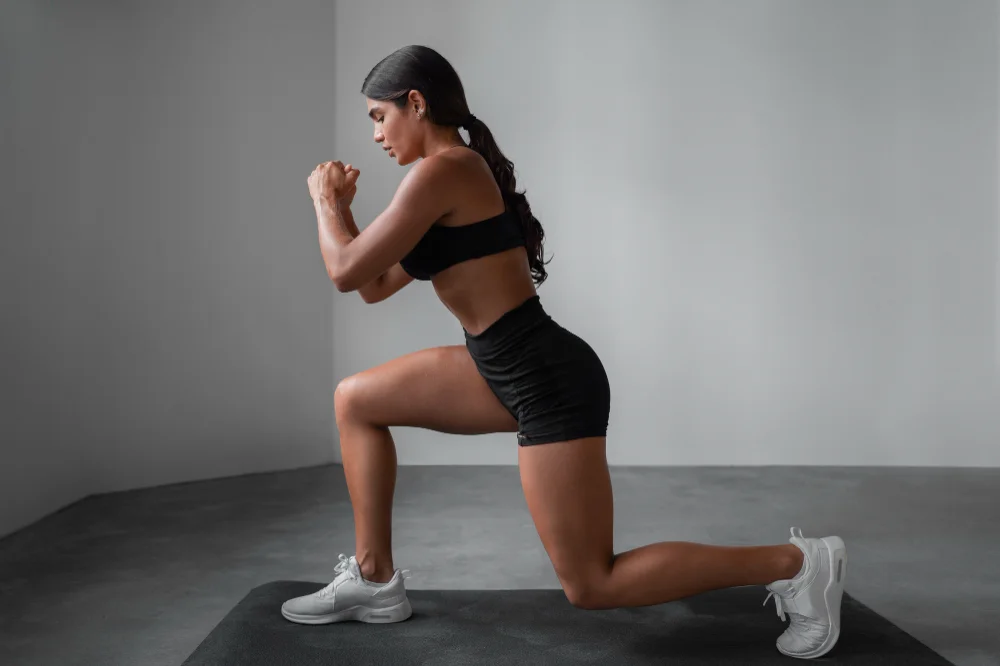Ever wondered why no matter how many squats you do, your glutes just aren’t growing? I did too. Years ago, I followed every generic “booty workout” online and saw little to no change. It wasn’t until I spoke to a sports physiotherapist and started tracking what really worked—including form, volume, and recovery—that I finally built glutes that weren’t just for show, but supported better posture, movement, and strength.
Let’s be clear: strong glutes aren’t just about aesthetics. They’re essential for stabilising your pelvis, reducing lower back pain, enhancing athletic performance, and keeping your hips aligned. If you spend most of your day sitting (like I did), your glutes are likely under-activated. That leads to tight hip flexors, a weakened posterior chain, and an increased risk of injury.
So what actually works? In this article, we’ll explore the best glute exercises, based on science and first-hand experience—with clear steps, expert insights, and real-world tips that go beyond the generic advice.
Why Your Glutes Matter (More Than You Think)
Your glute muscles (gluteus maximus, medius, and minimus) are the largest and among the most powerful muscles in the body. They play a crucial role in everyday movements:
- Walking and running
- Climbing stairs
- Lifting heavy objects
- Maintaining spinal alignment
Dr. Emily Splichal, a functional podiatrist and human movement specialist, says:
“Weak glutes are often at the root of knee pain, ankle instability, and even chronic lower back pain.”
Personal Experience:
After my third month of including focused glute training, I noticed not just visual changes, but I could deadlift heavier, sit longer without back discomfort, and my running form improved significantly. Let’s get into the exercises that made the biggest difference.
1. Barbell Hip Thrust
Best for: Glute hypertrophy and strength.
Hip thrusts are, hands down, one of the most effective glute-builders. A 2015 study published in the Journal of Strength and Conditioning Research found that hip thrusts activate the gluteus maximus significantly more than back squats.
How to do it:
- Sit with your upper back against a bench, knees bent, feet flat.
- Place a barbell over your hips (use padding).
- Thrust your hips upward, squeezing the glutes at the top.
- Lower slowly and repeat.
Real-world tip:
Start with bodyweight or a resistance band if you’re new. I used a mini band for two weeks before moving to an unloaded barbell—and my form improved dramatically.
2. Bulgarian Split Squats
Best for: Unilateral strength, balance, and targeting glutes over quads with slight tweaks.
Though it’s often dreaded, the Bulgarian split squat trains each leg individually, preventing strength imbalances.
Technique tip:
To hit the glutes more, lean your torso slightly forward during the descent and keep your front knee behind your toes.
“The Bulgarian split squat forces glute activation through a full range of motion. It’s one of my go-tos for athletes,” says Luke Worthington, strength coach and movement specialist.
3. Romanian Deadlift (RDL)
Best for: Strengthening the glute-hamstring connection.
Unlike traditional deadlifts, RDLs focus more on eccentric control and stretching the posterior chain.
How to perform:
- Stand holding dumbbells or a barbell.
- Hinge at your hips, keeping your back straight and knees slightly bent.
- Lower the weight just past your knees until you feel a stretch in your hamstrings.
- Drive your hips forward to return.
What worked for me:
I improved my glute engagement by slowing the descent to a 3-count and doing 8-10 reps. That time-under-tension made all the difference.
4. Cable Kickbacks
Best for: Isolating the gluteus maximus.
They’re often written off as a “gym influencer” move, but when done right, cable kickbacks are fantastic for fine-tuning your glutes.
Pro tip:
Pause for 1-2 seconds at the top to increase time under tension. Keep the movement slow and controlled.
5. Glute Bridges
Best for: Beginners and rehab, especially for those with low back pain.
These are a gateway to hip thrusts and can be done anywhere.
Variation:
Try single-leg bridges to fix imbalances.
6. Step-Ups (with a Glute Focus)
Best for: Functional strength and conditioning.
Choose a bench that brings your thigh parallel to the floor. Push through the heel and keep the torso upright. Holding dumbbells adds extra resistance.
Real-life result:
After adding weighted step-ups twice weekly, I noticed improved knee stability during hiking and fewer post-leg-day DOMS (Delayed Onset Muscle Soreness).
FAQs: Best Glutes Exercises
Q: How often should I train glutes?
A: 2-3 times per week is ideal for growth, with at least 48 hours between intense sessions.
Q: Can I build glutes without weights?
A: Yes, but it takes longer. Bodyweight moves like single-leg bridges, frog pumps, and resistance band workouts can still yield results with consistency and progressive overload.
Q: Do I need to squat to grow glutes?
A: Not necessarily. While squats are effective, exercises like hip thrusts and split squats often show greater glute activation.
Q: Why aren’t my glutes growing?
A: Check your form, volume, rest, and nutrition. Glutes need progressive overload, sufficient protein, and recovery time.
Final Takeaways: Building Glutes That Perform and Protect
Don’t chase a list of 20 exercises. Focus on 4-6 solid moves, master the form, and progress over time. Here’s what worked best for me:
- Hip thrusts twice a week
- Bulgarian split squats with a slight forward lean
- RDLs for strength and stretch
- Cables or bands for isolation and finishers
Mix in mobility work and plenty of walking to keep your glutes active outside the gym.
Ready to Feel (and See) the Difference?
Try incorporating just two of these exercises into your next leg day and track the difference in 4 weeks. If you’ve already tried them, let me know: Which one made the biggest impact for you? Drop a comment or share your experience—let’s grow stronger together.
Sources:
- Journal of Strength and Conditioning Research (2015)
- Interview with Luke Worthington
- Interview with Dr. Emily Splichal




